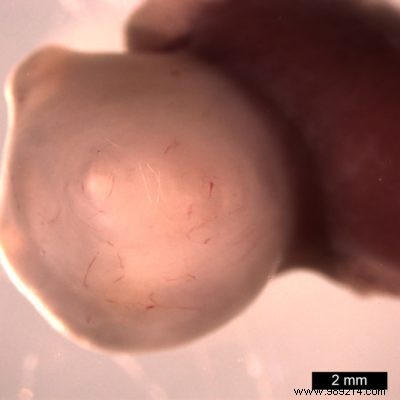Cultivating viable mini-organs in the laboratory could open up new avenues for understanding the development of different diseases or testing new treatments. In this sense, a team of researchers has just made a breakthrough by proposing the most advanced gastric organoids to date.
Cell cultures and other animal models have made great advances in the medical field. However, the results do not always translate to humans. A closer proxy is that of laboratory-grown organoids. Imagine tiny three-dimensional organs grown from stem cells.
In recent years, significant progress has been made in this still new area. Two years ago, researchers announced that they had successfully grown small genetically modified human livers in an attempt to mimic the progression of non-alcoholic fatty liver disease, a disease characterized by excess fat in the liver. .
More recently, researchers at Cincinnati Children's Hospital Medical Center made another major breakthrough by coming up with the most advanced gastric organoids. Their work is published in the journal Cell Stem Cell.
To develop these mini-stomachs, the researchers relied on three types of cells. The team started with human pluripotent stem cells. Simply put, these cells are able to be reprogrammed in their embryonic state. At this point, researchers can then trick them into becoming whatever type of cell they want.
In this case, the scientists cultured them in the three primary germ layers necessary for normal stomach development:neuroglial, mesenchymal, and epithelial enteric precursors.
"From these, we generated gastric tissue containing acid-producing glands , surrounded by layers of smooth muscle containing functional enteric neurons that controlled contractions of modified antral gastric tissue “Summarizes Alexandra Eicher, lead author of the study.
After about thirty days of development, the researchers transplanted their organoids into mice. There, fueled by blood flow and enjoying more space, the structures grew more than they would have in cell culture , becoming a thousand times bigger.

According to the authors of the study, these mini -organs would have even developed other characteristics that would not have otherwise been able to emerge such as a Brunner's gland, a structure capable of secreting an alkaline solution protecting the upper part of the intestine from the acidity of the stomach.
The team suggests that their technique of growing from multiple precursor cells could be applied to other mini-organs. Eventually, the goal would be to produce whole, normal-sized organs . These structures could then make it possible to respond to the request for transplantation, to more easily analyze the development of diseases or to probe the response of certain treatments.